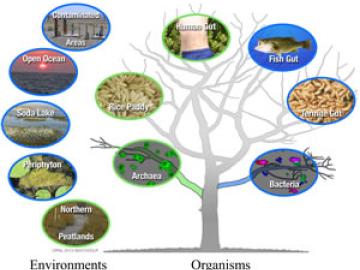
Filter News
Area of Research
Date
Media Contacts



Families of thousands of victims of social violence may gain closure, and killers may receive appropriate punishment, because of a suite of technologies able to locate clandestine graves. While investigators can find some graves, perhaps hundreds of thousands remain undiscovered. Researchers at th...


Scientists are using supercomputers to reveal the structure of proteins whose aggregation is involved in the development of neurodegenerative diseases like Alzheimer's, Parkinson's and Huntington's disease. Pavan GhattyVenkataKrishna, a former Oak Ridge National Laboratory postdoctoral...


Scientists at the Department of Energy’s Oak Ridge National Laboratory have developed a new oxygen “sponge” that can easily absorb or shed oxygen atoms at low temperatures. Materials with these novel characteristics would be useful in devices such as rechargeable batteries, sensors, gas converters and fuel cells.




